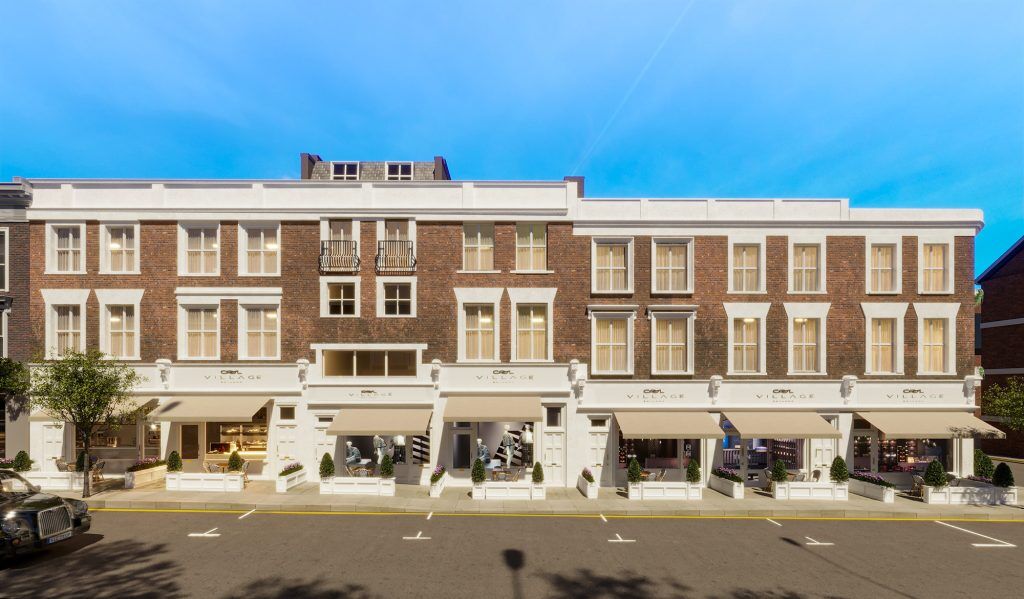What is Architectural Visualisation?
Posted by Imagineer on 22nd September 2023 -

Streamlines communications, lessens disappointments
Design communicates better through pictures. Photorealist CGI combines expectations of all stakeholders of projects to create an effective communication system. When decision makers in top management look at a similar picture, there’s less chance that the components might be disappointing. In streamlining communications architecture, visualization speeds up approval processes and actually starts construction. Images can be delivered worldwide and decisions regarding changes to the layout can be swiftly made by each party involved.
Sells imagined spaces
Human beings are visual creatures that see through their eyes or feelings. And photography has become a key marketing tool for property investors to lock in presale properties or investments. Dramatic illumination and elegant furniture and fixtures create an emotional story that assists buyers to contact a house before he or she starts building. Even proof-of-life features added as early as conception, like automobiles and figures, lend scale that helps the viewer understand reality.
Helps land contracts
In the architectural industry presentation is critical. Architects often pitch to clients while residential property developer companies battle for city approval on complex projects. The epoch will not be able to be seen without a creative approach. Architects use visualisations for this purpose. High-end CGI representations show that architects understand client needs. Developers can use the same verification process for planning permits by local authorities.
What is 3D visualization in architecture?
Tell me the difference between 3D architectural visualization? Communicate visually your customer’s proposals to tell a captivating tale. Futures of architecture design and 3D architectural visualization allow real-time development in advance of a building. This introduction post about ‘An Introduction to 3D Architectural Animation‘ is a great place to understand more about the animation space.
Who needs architectural visualization?
Architecture. Architectural visualization helps designers illustrate their designs using visualization. Architectural designers use visualisations in their projects from simple floor plans to complex 3D models.
What is 3D rendering
3-D rendering is an adaptation of a picture to resemble an object. Often referred to as 3D printing, it uses the application for creating images for the purpose of explaining or advertising a particular design concept. Technical drawing is commonly used when preparing 3D models. Once the 3D model was created the 3D artist added lighting, textures and cameras. The final step of the process called rendering is where the program computes each input to produce two dimensions. These pictures may be used as purely image rendering, woven into animations or created in real-time games using real time.

What is rendering in 3D process
Rendering in 3D is a process of transforming 3D models into realistic visual images. This process can be broken down into three main steps: modeling, shading, and rendering.
In the modeling stage, architectural elements are created as separate objects in a 3D software program. The design team has complete control over the shapes and sizes of these elements to ensure that they accurately represent existing structures or proposed designs.
Once the architectural elements have been modeled, lighting and textures are applied to them in order to create an accurate representation of how it would look in real life. This is known as shading, and requires careful consideration of scale, representation, detail level, environment etc.
Finally, the scene is rendered and the architectural visuals are brought to life. This process involves applying realistic details such as surface textures, shadows, reflections, and lighting effects. The architectural visuals created from this process can be used for a variety of purposes including marketing campaigns, architectural presentations, or even virtual reality simulations.
By working with experienced 3D renderers the project team can be sure that the architectural visuals will accurately represent existing structures or proposed designs in a realistic way. Rendering in 3D is an essential part of creating high-quality architectural visuals and 3D renderings.
- Key Points:
- Rendering in 3D is a process of transforming 3D models into realistic visual images through modeling, shading, and rendering stages
- Lighting and textures are applied to architectural elements in order to create an accurate representation of how it would look in real life
- Rendering involves applying realistic details such as surface textures, shadows, reflections, and lighting effects
- 3D renderers can provide architectural visuals that accurately represent existing structures or proposed designs in a realistic way
How do I learn architectural visualization and 3D rendering?
Learning architectural visualisation and 3D rendering is a skill that requires time, energy and dedication. It’s not something you’ll master overnight, but with effort and guidance, it can be achieved. There are various ways to learn architectural visualisation and 3D rendering, including self-teaching, online courses or workshops from experienced professionals.Autodesk provide great software and trials. You can also found good courses on Etsy for all levels from beginners through to experts refining their skills..
Self-teaching involves obtaining resources such as books or video tutorials and studying them independently in order to develop the necessary skills for architectural visualization and 3D rendering. This approach may suit those who prefer learning on their own schedule and have the discipline to stick to a plan consistently.
Alternatively, there are many online courses available which cover architectural visualization and 3D rendering. These courses typically provide step-by-step instruction, allowing for a more structured approach to learning. Additionally, some courses offer one-on-one feedback from experienced instructors which can be beneficial when developing architectural visualization and 3D rendering skills.
Finally, architectural visualization and 3D rendering workshops or classes held by experienced professionals can provide an opportunity to learn the necessary skills in a focused environment with hands-on assistance. This method of learning may suit those who need more guidance and support as they progress through their architectural visualisation project.
Whatever way you decide to learn architectural visualization and 3D rendering, it is important to stay motivated and consistent in your practice. With dedication, you will soon be able to produce realistic visuals that accurately represent existing structures or proposed designs.

Understanding the 3D rendering process
Understanding the 3D rendering process is essential for architectural visualization. 3D rendering involves creating a computer-generated image or animation based on three-dimensional data, usually in a virtual environment.
The 3D rendering process typically begins with the creation of a 3D model which represents the desired outcome. Next, materials and textures are applied to the model to enhance realism. Then lighting is added to achieve an appropriate atmosphere and colour scheme. Finally, any additional elements such as plants or furniture can be incorporated into the scene before rendering commences.
When it comes to architectural visualization projects, understanding how 3D rendering works is key for success. Knowing about different render engines and their capabilities can help you choose which one will best suit your project. It is also important to understand how lighting and materials can be used to create the desired look and feel of the architectural visuals.
By developing a thorough understanding of 3D rendering, it will be easier to produce high-quality architectural visuals that accurately reflect existing structures or proposed designs. Additionally, understanding the 3D rendering process can help you save time and resources while ensuring your architectural visualisation projects are top notch. More about the sustainable benefits of CGI in Architecture can be found here.
Using software for architectural visualization
Using software for architectural visualization is essential when creating professional-looking visuals. There are many programs available which provide users with powerful tools for producing architectural visuals. When choosing a program for architectural visualization projects, it is important to consider factors such as the cost, usability and features.
Common architectural visualization software includes 3D modelling programs such as Autodesk 3Ds Max, Blender or SketchUp. These programs allow users to create detailed three-dimensional models which can then be exported for rendering in another program.
Rendering software provides users with a variety of tools for creating photorealistic architectural visuals. Some popular rendering programs include V-Ray, Maxwell Render, Corona Renderer and Keyshot. Additionally, some architectural visualization projects may require the use of specialized plugins or add-ons which are available through third party vendors.
By leveraging powerful software tools specifically designed for architectural visualization, it will be easier to produce realistic architectural visuals and renderings in less time. Additionally, these programs provide users with the flexibility to create visuals for both traditional and digital formats. With the right software, architectural visualization projects can become much more efficient and successful in no time.
Ways to improve architectural visualization results
In addition to understanding 3D rendering processes and using specialized architectural visualization software, there are several other ways to improve architectural visualization results. Here are some tips that may help:
– Utilize High Quality Textures: Using high quality textures will enhance realism and make architectural visuals look more professional. It is important to choose textures that suit your project, as some textures can end up looking too abstract or simply not appropriate for the architectural visuals.
– Use Accurate Lighting: Accurate lighting is key to creating a believable architectural visual. It is important to think about the type of environment you want your architectural visuals to exist in, and then adjust the lighting accordingly.
– Develop an Understanding of Composition: Good composition can make architectural visuals look more aesthetically pleasing and professional. It is important to consider the elements within a scene such as scale, perspective and depth when coming up with a composition for architectural visualization projects.
By following these tips, it will be easier to produce high quality architectural visuals that accurately represent existing structures or proposed designs. With consistent practice, architectural visualization results can become much more impressive in no time.
Uses for 3D rendering
3D rendering can be used for a variety of architectural visualisation projects, from 3D architectural walkthroughs to realistic architectural illustrations. Here are some common uses for 3D rendering:
– Architectural Illustrations: Using 3D rendering can help create high quality architectural illustrations which accurately depict existing structures or proposed designs. These visuals can be used for various purposes such as marketing materials, presentations and portfolios.
– Animations: Animations are excellent tools for helping to explain architectural concepts in an engaging format. 3D rendering makes it easier to produce professional looking animations that accurately represent the architectural design.
– 3D Walkthroughs: By creating a 3D model of the architectural structure, users can easily produce 3D architectural walkthroughs which accurately showcase the design. These walkthroughs can be used as marketing materials or to show potential clients how a proposed design would look in real life.
3D rendering is an invaluable tool for architectural visualization projects and can help produce stunning visuals that accurately represent existing structures or proposed designs. With 3D rendering, it will be much easier to create professional looking architectural visuals in no time.
Enables smoother collaborative work
The planning stages for an undertaking are often lengthy and difficult. Details can fall into the cracks of countless email messages that go back and forth, resulting from misunderstanding, unhappy customer experiences. Visualizing architecture helps architects/customers collaborate more efficiently. Modern technologies have enabled designers change crucial components during the design phase and can be done within a couple weeks of the project without a lot of effort. Change can be made quickly and this helps cut down time on building work significantly.
Discover real estate services and properties on The Landsite, the UK's leading centralised hub for the real estate sector.
Register your business on The Landsite




